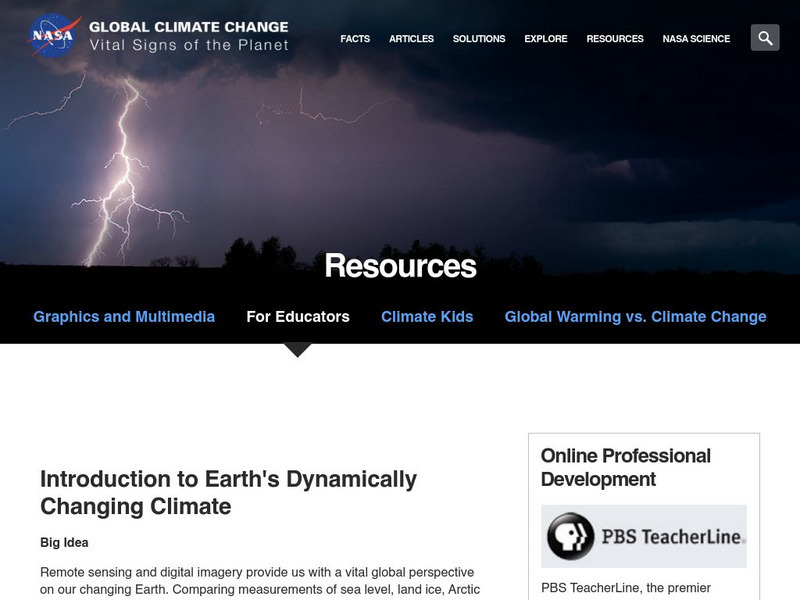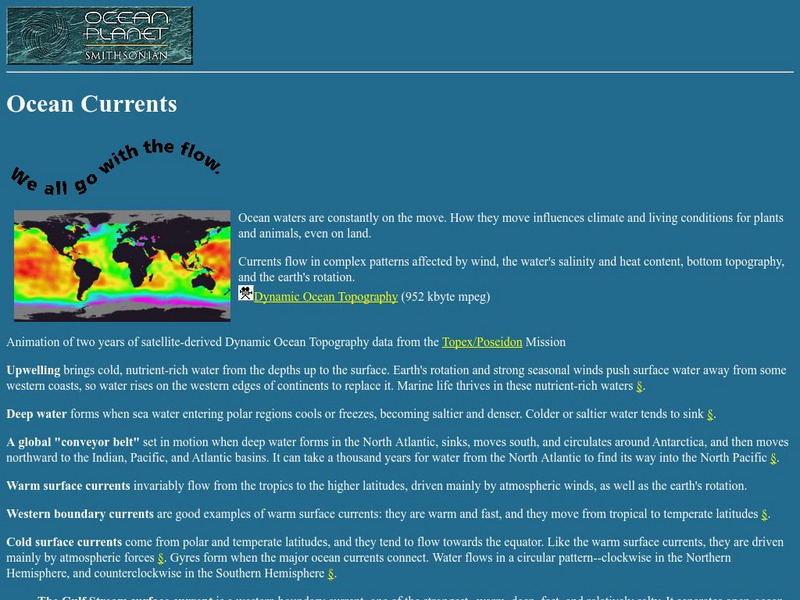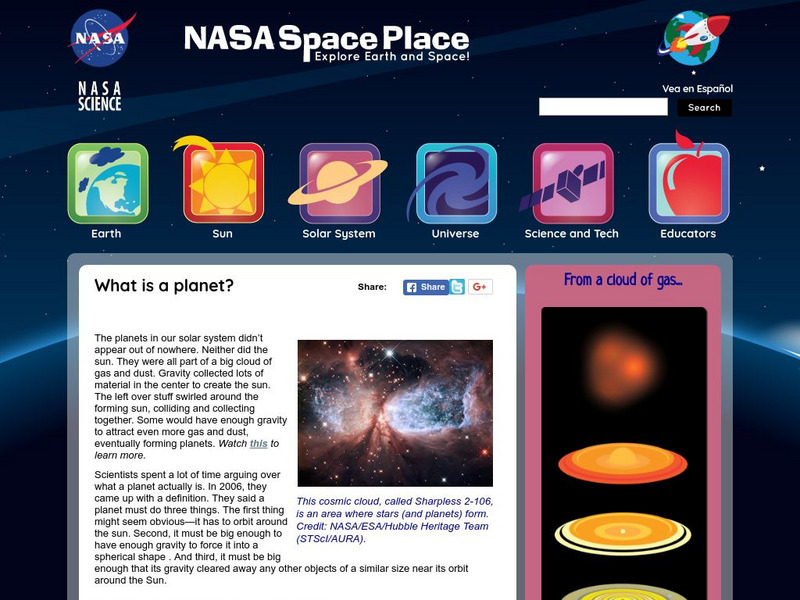NASA
Nasa: Solar System Exploration: Planets
This impressive compilation of ideas is a great source for space science. Loaded with extra links for further information on the solar system.
NASA
Nasa: Jet Propulsion Laboratory: Planet Quest: Exoplanet Exploration
Constellation of articles, images, diagrams, posters, videos, and more on the subject of the search for planets, particularly Earth-like planets, outside our solar system.
NASA
Nasa: Neptune: Overview: The Windiest Planet
Prepared by NASA, this site provides a detailed look at the planet Neptune. The menu tabs are divided into overview, moons, rings, photo gallery, and facts and figures. Just click to access specific information on any of these topics.
NASA
Nasa: Solar System Exploration: Planets: Venus
Comprehensive look at the planet Venus, with many useful facts, figures, photos, and related links. Provides an account of how Venus got it's name and a timeline of significant dates.
NASA
Nasa: Earth: Overview: Our Home Planet
Provides a comprehensive look at the planet Earth including photos, how Earth got its name, and facts and figures about its size, seasons, moon, atmosphere, rotation, and lithosphere.
NASA
Nasa: Uranus: Overview: The Sideways Planet
Detailed look at the planet Uranus, with many useful facts, figures, photos, and related links.
NASA
Nasa: Mercury: Overview: The Swiftest Planet
Comprehensive look at the planet Mercury, with many useful facts, figures, photos, and related links. Provides an account of how Mercury got it's name and a timeline of significant dates.
NASA
Nasa: Solar System Exploration
Enter our solar system to interact with the planets, moons, asteroids, meteors, and more. Investigate with NASA scientists and explore missions related to space exploration. Read facts, compare statistics, look through resources, and...
NASA
Nasa: Solar System Exploration
This stunning site on the solar system gives a great overview of the planets and our sun. Learn about each object's size, vital statistics, and moons. Then go on for a more in depth look at these objects in the column on the left.
NASA
Nasa: Introduction to Earth's Dynamically Changing Climate
NASA and PBS have joined forces to provide a lesson plan that will enable students to analyze data that documents a warming planet. Videos and other necessary documents for the lesson plan are provided. PBS TeacherLine also provides a...
South Carolina Educational Television
Etv: Nasa Online: Light: Atmosphere
An interactive look at our atmosphere and factors which affect planet Earth. NASA measurements of volcanic eruptions, toxic emissions, aerosols, and wind patterns are all graphically displayed. Basic text plus bold visuals make this...
NASA
Nasa: Cassini: Mission to Saturn
NASA site details what sets Saturn apart from the other planets in our solar system and why the Cassini spacecraft mission is important.
Smithsonian Institution
National Museum of Natural History: Ocean Planet: Ocean Currents
The Ocean Planet exhibit at the Smithsonian explains the general features of ocean circulation. A general look at upwelling, deep water, and currents are combined for an overall view.
NASA
Nasa: Discovery Mission: Messenger
The MESSENGER (MErcury: Surface, Space ENvironment, GEochemistry and Ranging) mission is a scientific investigation of the planet Mercury. This site provides information about its mission objectives and management.
NASA
Nasa Space Place: All About Mercury
Students have an opportunity to learn more about Mercury. Each badge contains a student centered experience to understand another aspect of the planet.
NASA
Nasa Star Child: Space Probes to Venus
A brief discussion of the space probes that have reached the planet Venus.
NASA
Nasa: Follow Curiosity's Descent to Mars
The Curiosity rover set out to answer the question: Did Mars ever have the right environmental conditions to support small life forms called microbes? The Curiosity Mars Descent Imager (MARDI) captured the rover's descent to the surface...
NASA
Nasa: Mars Exploration Rover Mission: Animation
This series of animations will take you from Earth to the Red Planet in less than ten minutes. The animation series begins with the initial launch and journey through the Earth's atmosphere. Entry into Mars, its landing and exploration...
NASA
Nasa: Solar System
This resource provides a general overview of all the planets in the solar system, as well as the sun, various comets and asteroids, the deep space network, and the latest solar system news.
PBS
Pbs Learning Media: Precipitation on the Planet
Precipitation affects many aspects of our lives, from drinking water and food to devastating rain or snow storms. NASA gathered information from satellites to study factors that influence precipitation. View these narrated and unnarrated...
NASA
Nasa: Planetary Data Sytem: Welcome to the Planets
Collection of images, with vocalized explanatory captions, of the planets acquired by NASA as part of its exploratory space programs.
NASA
Nasa: Space Place: Messenger: Planet Mass Comparison
Compare the masses of planets in this interactive animation. Simply pile a number of Earths on one side of the scale, to balance with the mass of one Jupiter. Then try this with all the planets.
NASA
Nasa: Space Place: What Is a Planet?
Explore our solar system's planets- more specifically what planets are made of, and how they are formed.










